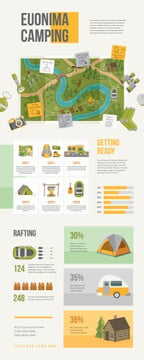Grow And Maintain And Run Your Own Empire Entity By Selling Camping Tents
Grow And Maintain And Run Your Own Empire Entity By Selling Camping Tents
Blog Article
Does Your Backpacking Camping Tent Need a Footprint?
A footprint is costly and adds additional weight to your backpack. It likewise isn't especially long lasting.
Do tents hold heat?
Ultimately, whether or not a tent footprint is necessary depends on where and how often you're camping. As a whole, it's an excellent concept to utilize one if you camp on rough surfaces or in wet conditions.
Tents with Reduced Deniers and Water-proof Rankings
Outdoors tents with reduced deniers and water resistant scores tend to be lighter, but they can also be more fragile. They might call for even more regular repair services and have less interior space than tougher models. If you're a casual backpacker that suches as to take a trip quick and light, this may be fine; however, more experienced walkers recognize that giving up toughness can include huge repercussions down the trail.
The denier and waterproof ranking of an outdoor tents's cover, rainfly, and flooring can help you determine its livability. Look for higher-denier textiles on the cover and rainfly, in addition to taped seams that help prevent water from permeating via stitches. Some makers even use warmth and sealer throughout building to create a more powerful joint; these are called welded seams.
The livability of a tent can additionally be figured out by its floor dimensions and ability. An outdoor tents's flooring ought to be slightly smaller sized than the impact to prevent water from merging under the sanctuary.
Camping Tents in Rough Terrain
Several backpacking outdoors tents include a footprint made particularly for their design, which helps make sure a proper fit and shields the outdoor tents's base from moisture and sharp things. Other suppliers sell global footprints that can be reduced or folded to match an outdoor tents's measurements.
The type of surface you'll come across is one more important factor to consider for selecting an outdoor tents. As an example, if you'll be camping in a canyon or gully, search for a sanctuary that can manage strong winds. These problems produce turbulence that can make the distinction between appreciating your campsite or enduring discomfort.
The capacity and optimal height of an outdoor tents provide you a good concept of its livability, but added elements to consider consist of vestibules (the section of the rainfly covering the doors) and general storage space. As an example, during our winter months testing of the Marmot Tungsten, its charitable 93-by-82-inch floor conveniently dealt with 4 sweaty backpackers and their puffier shoulder period sleeping bags while still leaving enough room for equipment and people.
Outdoors Tents in Wet Issues
Even if your tent shows up dry, wetness prowls in the spaces and crannies. With time, it can break down the textile. That's why it's so vital to make use of rest days to deep-clean your camping tent and its components, such as zipper cellular linings, stake loopholes and adjustable webbing straps.
Additionally, make certain to pitch your outdoor tents in a flat location, not a divot or concave spot, to make sure that ground water doesn't accumulate between the cot bed camping tent floor and footprint or tarpaulin. And if you're utilizing an impact, think about a custom-cut one made for your tent's layout. It will not collect rain the way a generic ground cloth or tarpaulin can.
Method establishing and taking down your camping tent at home before you hit the trail, to get a feel for just how quickly and effectively you can do it. Additionally, practice surveying your tent in various surfaces to see exactly how very easy it is (or isn't) to do in bad weather conditions.
Camping Tents in High-Rise Situations
Outdoors tents range in flooring size and livability. As an example, a large outdoor tents with dual doors and vestibules like Marmot's Tungsten can manage 4 backpackers without needing acrobatics to get in and out or to keep equipment.
The minimum path weight requirements is the very best specification to compare designs, as it includes the bare fundamentals: outdoor tents body, rainfly and poles. However remember that the spec omits camping tent risks, guy lines and stuff sacks.
A lot of backpacking tents can hold up to a light summertime tornado, yet some can be swept away by gale-force gusts. Look for a design with solid poles, a raised bathtub-style flooring and seam taping to minimize the opportunity of water seeping with. Costlier layouts likewise often tend to feature stronger products that can stand up to the impact of debris and other pressures.
How do I have fun camping?
